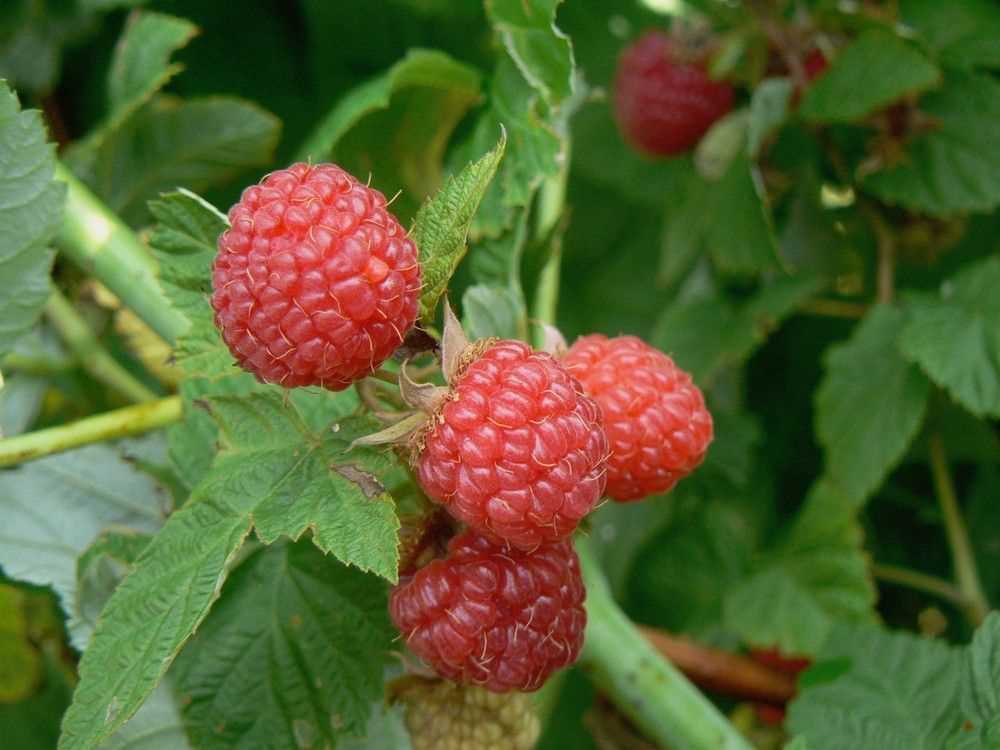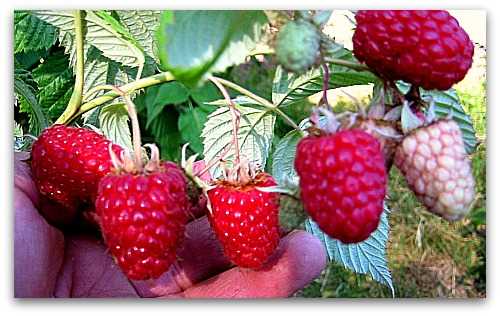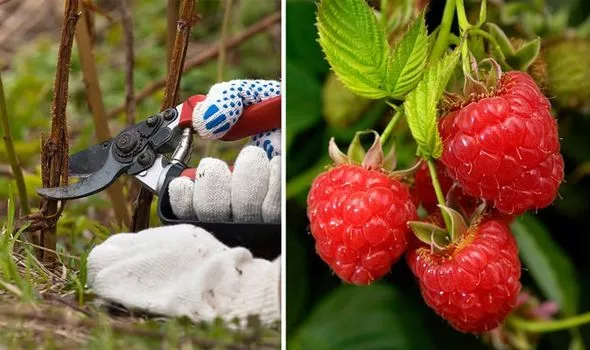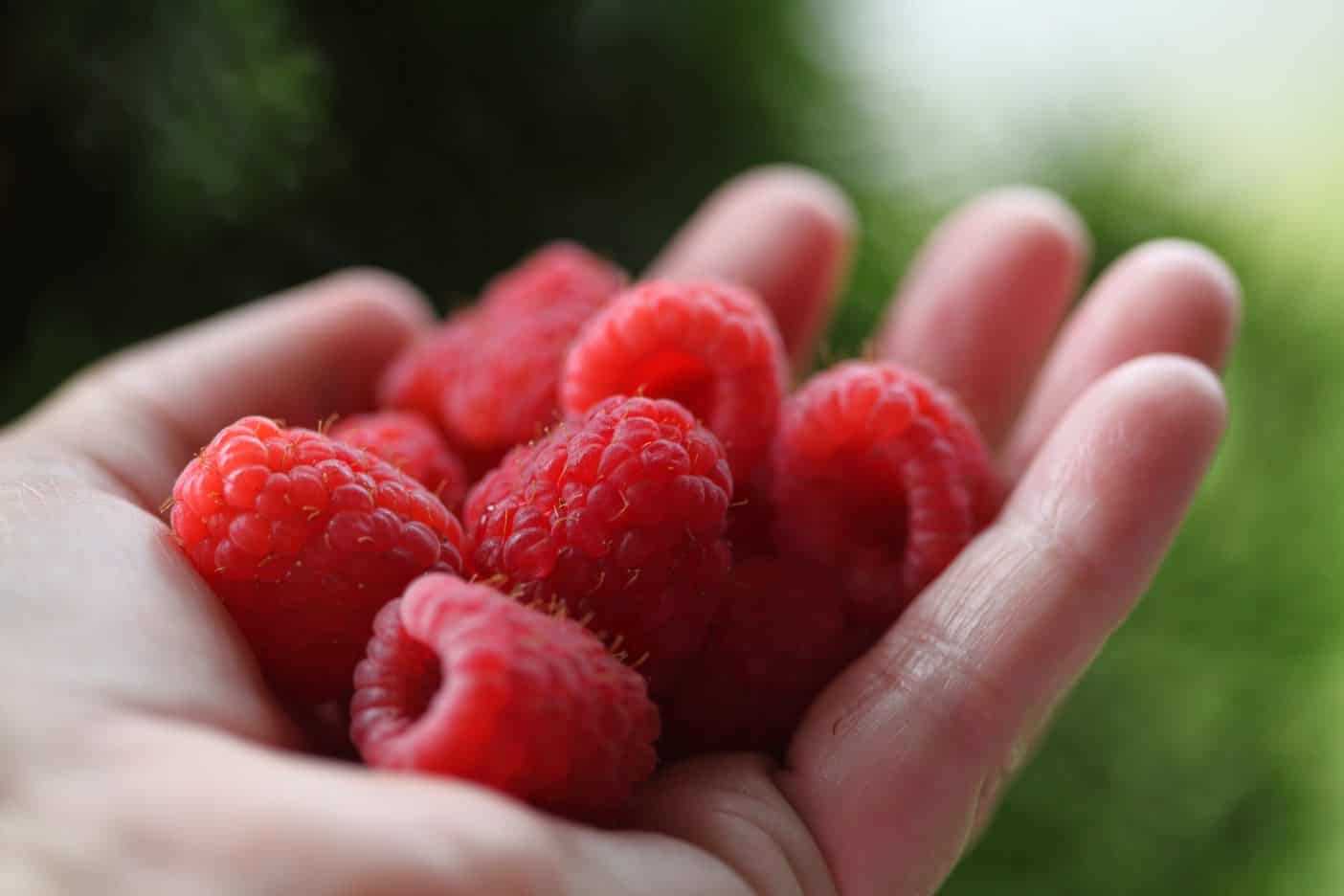- Importance of Spring Pruning for Raspberries
- Best Time to Prune Raspberries in Spring
- Timing for Summer-Bearing Raspberries
- Timing for Everbearing Raspberries
- Tips for Pruning Mature Raspberry Plants
- Required Tools and Equipment for Spring Pruning
- Different Pruning Techniques for Raspberries
- 1. Summer Pruning
- 2. Winter Pruning
- 3. Tipping
- 4. Renewal Pruning
- 5. Primocane Bearing Varieties
- 6. Everbearing Varieties
- Pruning Options for Neglected or Overgrown Raspberry Plants
- 1. Renewal Pruning
- 2. Thinning Pruning
- 3. Selective Pruning
- 4. Training Pruning
- Question-answer:
- When is the best time to prune raspberries in the spring?
- What is the purpose of spring pruning for raspberries?
- What should I do with the canes I prune in the spring?
- Can I prune raspberries later in the spring if I missed the ideal timing?
- How much should I prune off the raspberry canes in the spring?
- What tools do I need for spring pruning of raspberries?
- Can I prune raspberry plants in the fall instead of spring?
- Video: Want more blueberry plants for FREE? take softwood cuttings!
Raspberries are a popular fruit to grow in home gardens due to their delicious flavor and hardy nature. However, proper pruning is essential to ensure healthy growth and abundant fruit production. In this article, we will explore the importance of pruning raspberries in the spring and provide valuable timing tips and options.
Pruning raspberries in the spring is crucial because it helps remove dead or diseased canes, promotes airflow and sunlight penetration, and stimulates new growth. By removing old canes, you are allowing the plant to focus its energy on producing new canes that will bear the highest quality fruit.
Timing is key when it comes to pruning raspberries in the spring. It is best to wait until the danger of frost has passed and the buds have started to swell. This is usually around late winter or early spring, depending on your region’s climate. Pruning too early can leave the plants vulnerable to frost damage, while pruning too late can delay the plant’s growth and result in a smaller harvest.
There are a few different options when it comes to pruning raspberries in the spring. One method is to remove all canes that bore fruit the previous year, as they will not produce again. Another option is to use a selective pruning approach, where you remove only the dead, damaged, or weak canes, while leaving the healthy ones intact. This method allows for easier maintenance and ensures that the remaining canes have enough space to grow and produce quality fruit.
Importance of Spring Pruning for Raspberries
Spring pruning is an essential practice for maintaining the health and productivity of raspberry plants. By removing old and diseased canes, gardeners can promote the growth of new, vigorous canes and prevent the spread of pests and diseases. This process also helps to improve air circulation and sunlight penetration, leading to better fruit production.
There are several reasons why spring pruning should be prioritized for raspberry plants:
- Disease prevention: Raspberry plants are susceptible to various diseases, such as anthracnose, botrytis fruit rot, and powdery mildew. By removing infected canes during the spring, gardeners can reduce the risk of disease spread and ensure a healthier growing environment for the remaining canes.
- Increased yield: Pruning allows raspberries to allocate their energy to new growth and fruit production. By selectively removing weak, unproductive canes, the plant can concentrate its resources on developing robust canes that will produce more and better-quality fruit.
- Manage plant size: Raspberries have a tendency to spread rapidly and can become unruly if left unpruned. Spring pruning helps to control the size and shape of the plant, making it easier to manage and harvest the fruit.
- Improved air circulation and sunlight exposure: Pruning opens up the raspberry plant, allowing better air circulation and sunlight penetration. This reduces the risk of fungi growth, improves fruit ripening, and increases overall plant health and vigor.
It is important to prune raspberries at the right time, usually in early spring before new growth begins. This timing ensures that the plant’s energy is directed towards new growth rather than repairing wounds caused by pruning. Following the correct pruning techniques, such as cutting just above a bud, helps to stimulate healthy and balanced growth.
| Tool | Description |
|---|---|
| Pruning shears | Small hand tool for precise cuts on smaller canes and branches. |
| Loppers | Long-handled tool with more cutting power for thicker canes and branches. |
| Pruning saw | A sturdy tool for cutting thicker canes and removing larger branches. |
| Gloves | Protective gloves to prevent injury from thorns and sharp cuts. |
In conclusion, spring pruning plays a vital role in maintaining the health, productivity, and appearance of raspberry plants. By following proper pruning techniques and timing, gardeners can ensure the longevity and success of their raspberry harvest.
Best Time to Prune Raspberries in Spring
Pruning raspberries in the spring is an important task to ensure healthy and productive plants. The timing of when to prune depends on the type of raspberries you have, as well as your climate and local growing conditions.
Timing for Summer-Bearing Raspberries
For summer-bearing raspberries, the best time to prune is in early spring, before new growth begins. This usually falls in February or March, depending on your location. Pruning at this time allows the plants to focus their energy on producing new canes and fruit.
When pruning summer-bearing raspberries, start by removing any dead, damaged, or diseased canes. These canes will be brown, brittle, or showing signs of rot or disease. Cut them down to the base of the plant to encourage new growth.
Next, thin out the remaining canes, leaving only the healthiest and strongest ones. Aim to have about 4-6 canes per linear foot of row. Trim these canes back to about 5-6 feet tall to encourage lateral branching and easier fruit harvesting. You can also remove any weak or thin canes that won’t produce much fruit.
Timing for Everbearing Raspberries
Everbearing raspberries have a different pruning schedule than summer-bearing varieties. The best time to prune everbearing raspberries is also in early spring, but you can delay it until mid to late spring if desired. This allows you to enjoy an early crop of berries before pruning.
To prune everbearing raspberries, start by removing any dead, damaged, or diseased canes, just like with summer-bearing raspberries. Thin out the remaining canes to about 4-6 per linear foot, leaving the healthiest ones. Trim these canes back to about 5-6 feet tall.
In addition to the early spring pruning, everbearing raspberries benefit from a second pruning in late summer or early fall. This pruning involves removing the canes that have produced fruit, leaving the newly formed canes for next year’s crop. Cut the canes that have produced fruit back to the ground, and leave the new canes untouched.
By following these pruning guidelines, you can help your raspberries stay healthy and productive throughout the growing season.
Tips for Pruning Mature Raspberry Plants

Pruning mature raspberry plants is an important task to ensure healthy growth and abundant fruit production. Here are some tips to help you properly prune your mature raspberry plants:
- Timing: Prune your mature raspberry plants during late winter or early spring, before new growth begins. This timing ensures that the plants are dormant, reducing the stress caused by pruning.
- Remove old canes: Identify and remove the old canes, which are usually darker in color and have a dry appearance. These canes are no longer productive and should be pruned close to the ground.
- Thin out crowded canes: Remove any canes that are overcrowding the plant to improve air circulation and sunlight penetration. This allows the remaining canes to grow and produce better fruit.
- Prune lateral branches: Trim the lateral branches of the remaining canes, leaving about 12 to 18 inches of growth. This encourages new growth and stimulates the production of fruit-bearing lateral shoots.
- Proper disposal: Collect and remove all pruned canes and plant debris from the area to prevent the spread of diseases and pests. Do not compost the pruned materials, as they may still harbor harmful pathogens.
- Mulch: Apply a layer of organic mulch around the base of the plants after pruning to help conserve soil moisture, suppress weeds, and provide additional nutrients to the roots.
Remember to always use clean and sharp pruning tools to prevent the spread of diseases. By following these tips, you can help your mature raspberry plants stay healthy and productive for years to come.
Required Tools and Equipment for Spring Pruning
Proper pruning of raspberry plants requires certain tools and equipment to ensure a successful and efficient process. Here are the essential tools you will need:
- Pruning shears: These handheld pruning tools are a must-have for removing small branches and canes. Look for shears with sharp blades and a comfortable grip to make the job easier.
- Loppers: Loppers are designed for cutting thicker branches. They have longer handles and larger blades to provide extra leverage for cutting through woody stems.
- Hedge shears: Hedge shears are useful for shaping the raspberry plant and removing any unwanted growth. They have longer blades than pruning shears and can cover a larger area, making them ideal for tasks like trimming the overall shape of the plant.
- Hand saw: A hand saw is necessary for cutting through larger branches or canes that are too thick for pruning shears or loppers. Choose a saw with a sharp, sturdy blade for easy and efficient cutting.
- Gloves: Pruning raspberries can be a prickly task due to their thorns, so it’s important to protect your hands with a good pair of gardening gloves. Opt for gloves that provide both comfort and durability.
- Protective clothing: In addition to gloves, wearing long sleeves and pants can help protect your skin from scratches and irritation caused by the thorny canes.
- Disinfectant: Disinfectant is essential to prevent the spread of diseases or pests when pruning multiple plants. Clean your tools with a disinfectant solution before and after each use to ensure sanitary pruning.
- Garden twine: Garden twine is useful for tying up canes or branches to support the raspberry plant. This will help keep the plant upright and prevent it from flopping over.
Having the right tools and equipment for spring pruning will make the process more efficient and help you achieve the desired results for your raspberry plants. Make sure to keep them in good condition and properly store them after each use to prolong their lifespan.
Different Pruning Techniques for Raspberries
Pruning raspberries is essential for maintaining the health and productivity of the bushes. There are several pruning techniques that can be used, depending on the variety of raspberries and the desired outcomes.
1. Summer Pruning
Summer pruning involves removing the spent canes that have finished fruiting. This technique improves air circulation and reduces the risk of disease and pest infestation. To summer prune, simply cut the canes that have produced fruit back to ground level, leaving the new canes untouched.
2. Winter Pruning
Winter pruning is typically done on dormant plants during late winter or early spring. This technique is used to remove weak or damaged canes and to shape the raspberry bush. Cut any dead, diseased, or damaged canes back to ground level. Thin out the remaining canes by removing the oldest and weakest ones.
3. Tipping
Tipping involves cutting the top few inches of the new canes in the summer before they reach their full height. This technique encourages lateral branching and results in a bushier raspberry plant with more fruit-bearing branches.
4. Renewal Pruning
Renewal pruning is a technique used to rejuvenate old raspberry plants. This involves cutting all canes back to ground level during late winter or early spring. The following year, new canes will emerge and produce a fresh crop of raspberries.
5. Primocane Bearing Varieties
Primocane bearing raspberry varieties produce fruit on new canes that grow in the same year. With these varieties, you have the option to prune once in late winter or early spring, cutting all canes to ground level, or to prune twice – once in winter and once in summer. Pruning in winter removes the older canes, and summer pruning removes the spent canes after fruiting.
6. Everbearing Varieties
Everbearing raspberry varieties produce fruit on both the previous season’s canes and new canes. For everbearing raspberries, it is recommended to prune in late winter or early spring, removing the older canes that have finished fruiting. This technique maintains a balance between older and newer canes, ensuring a continuous crop of raspberries throughout the growing season.
Remember to always use clean and sharp pruning tools when pruning raspberries to minimize the risk of disease transmission. Additionally, dispose of the pruned canes properly to avoid spreading infections. Lastly, make sure to familiarize yourself with the specific pruning recommendations for the variety of raspberries you are growing as they may have slightly different requirements.
Pruning Options for Neglected or Overgrown Raspberry Plants

When raspberry plants have been neglected or become overgrown, they may require more extensive pruning to rejuvenate and maintain their health and productivity. Here are some pruning options to consider for neglected or overgrown raspberry plants:
1. Renewal Pruning

Renewal pruning involves removing old, unproductive canes to make room for new growth. This type of pruning is typically done in late winter or early spring before new growth begins. Follow these steps for renewal pruning:
- Identify the old canes by their brown, woody appearance.
- Using sharp pruning shears or loppers, cut the old canes down to the ground.
- Leave the younger, more vigorous canes that are still green and alive.
Renewal pruning helps stimulate new cane growth and improves airflow and light penetration in the plant’s canopy, promoting better fruiting.
2. Thinning Pruning

Thinning pruning involves selectively removing excess canes to reduce overcrowding and improve airflow within the raspberry patch. This type of pruning is typically done during the growing season, around early summer or after harvest. Follow these steps for thinning pruning:
- Identify the crowded areas within the raspberry patch.
- Selectively remove a portion of the canes, aiming for an even spacing of about 4-6 inches between canes.
- Remove any weak or damaged canes.
Thinning pruning helps prevent diseases and pests by improving air circulation and sunlight exposure. It also allows the remaining canes to receive more nutrients and water.
3. Selective Pruning
Selective pruning involves cutting back specific canes to control the height and width of the raspberry plants. This type of pruning is done throughout the year, as needed. Follow these steps for selective pruning:
- Identify the canes that are growing excessively tall or spreading too wide.
- Using sharp pruning shears or loppers, cut the selected canes back to the desired height or width.
Selective pruning helps maintain the shape and size of the raspberry plants, making them easier to manage and harvest. It also encourages the development of lateral branches and more concentrated fruit production.
4. Training Pruning

Training pruning involves guiding the growth of raspberry plants to a specific support system, such as a trellis or wire structure. This type of pruning is typically done during the growing season, as the canes start to grow. Follow these steps for training pruning:
- Identify the strongest and most upright canes.
- Secure these canes to the support system using ties or clips.
- Remove any canes that are not aligned with the support system or growing in undesirable directions.
Training pruning helps prevent the canes from sprawling on the ground, making it easier to manage the plants and harvest the fruits. It also improves sunlight exposure and airflow, reducing the risk of diseases.
Remember to always use clean and sharp pruning tools to minimize the risk of damaging the plants. After pruning, ensure proper watering, fertilization, and mulching to support the rejuvenation and growth of the raspberry plants.
Question-answer:
When is the best time to prune raspberries in the spring?
The best time to prune raspberry plants in the spring is when they are dormant, before new growth begins. This is typically done in late winter or early spring, before the buds break dormancy.
What is the purpose of spring pruning for raspberries?
The purpose of spring pruning for raspberries is to remove dead and diseased canes, promote better air circulation, and stimulate new growth. It helps to maintain the health, vigor, and productivity of the plants.
What should I do with the canes I prune in the spring?
After pruning the canes in the spring, you can either compost them or burn them. It’s important to remove the pruned canes from the garden to prevent the spread of diseases and pests. Do not leave them on the ground near the raspberry plants.
Can I prune raspberries later in the spring if I missed the ideal timing?
If you missed the ideal time to prune raspberries in late winter or early spring, you can still prune them later in the spring. However, it’s best to do the pruning before the plants start to produce new growth. Pruning too late in the season may reduce the yield for that year.
How much should I prune off the raspberry canes in the spring?
The amount of pruning required for raspberry canes in the spring depends on the type of raspberries you have. For summer-bearing raspberries, it is recommended to prune all canes back to the ground. For ever-bearing raspberries, you can either prune all canes back to the ground or leave some canes to produce fruit in the fall.
What tools do I need for spring pruning of raspberries?
For spring pruning of raspberries, you will need a pair of sharp pruning shears or loppers to cut through the canes. Make sure the tools are clean and sanitized to prevent the spread of diseases. Gloves and protective eyewear are also recommended.
Can I prune raspberry plants in the fall instead of spring?
While raspberries can be pruned in the fall, spring pruning is generally preferred because it allows the plants to go through the dormant period with the pruned canes. Fall pruning may leave the plants vulnerable to winter injury. However, if you missed pruning in the spring, fall pruning is better than no pruning at all.







